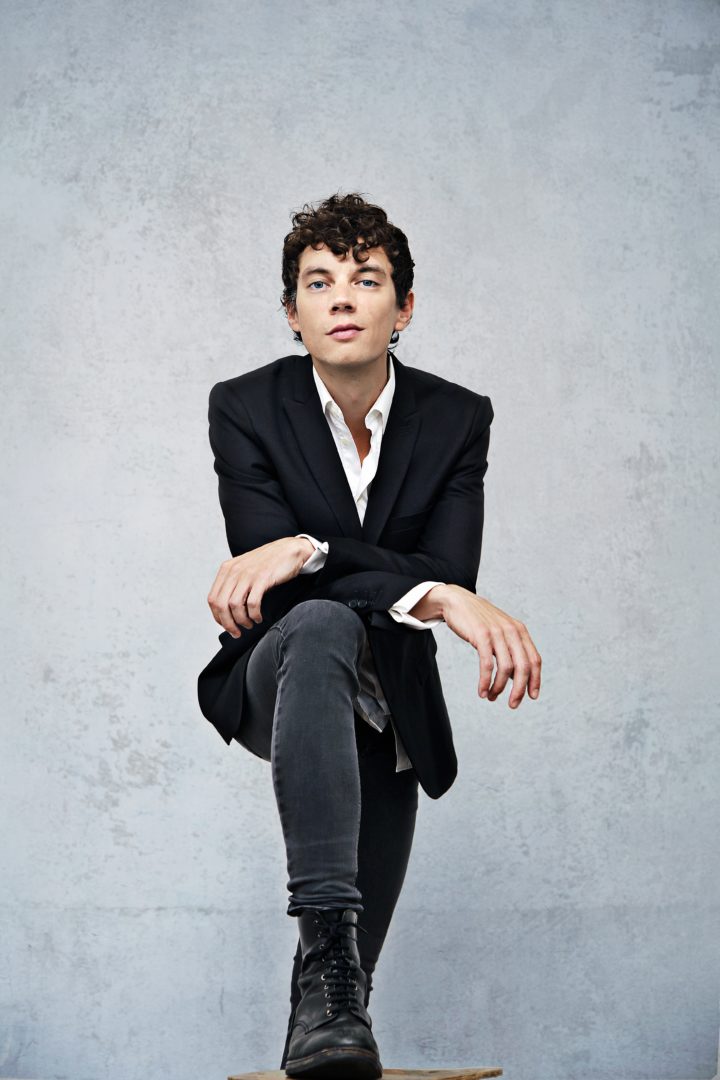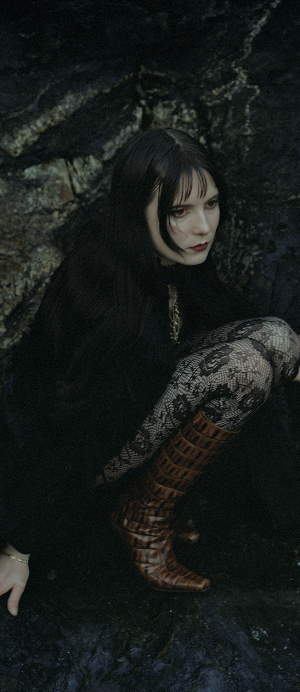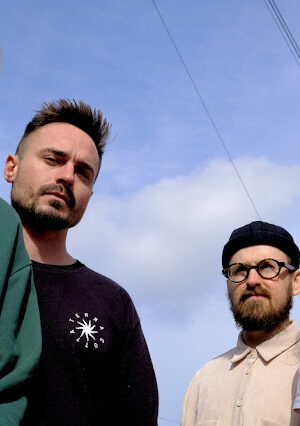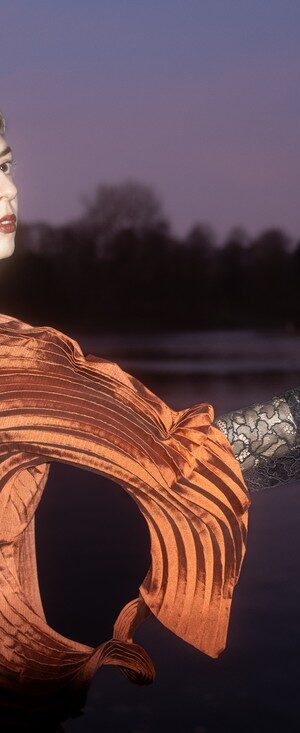TMR TALKS TO...
FRANCESCO TRISTANO
In this interview feature, we get to know the most radicalist up and coming stars on the planet. This time we talk to beatmaker and pianist Francesco Tristano. Having primarily cut his teeth as a producer for dance music, Tristano has recently produced a new classical album: Piano Circle Songs. Inspired by the fact that he has recently become a father, it features long and short form circular patterns across its fifteen tracks, including three different versions of the gorgeous title track ‘Circle Song’. The work also features a collaboration with renowned Canadian pianist, Chilly Gonzales, with whom Tristano has recently performed with on tour. TMR met Tristano whilst he was in the UK on a press tour ahead of his performance at the Royal Festival Hall in September to chat about geometry, children, cuisine and travelling. *** TMR: Circles are obviously a huge part of Piano Circle Songs and circles and music can interact in many different ways – structurally, conceptually etc. In what ways have circles affected this work, and are there any particular circular concepts which you feel a particular affinity with? A circle is the most perfect geometric form. Because it doesn’t have a beginning, it doesn’t have an end, it has infinite axes of symmetry. I like the idea of a cycle in the circle, which you can start at any given point – it’s infinite. And the music for this album works like this, you have the first and last tracks but really it could start over again. Circles can also be transformative, like the seasons, so you can repeat something a number of times but each time we hear it we interpret it in a different way. It’s quite intimate, I really wanted to bring the listener inside a very intimate circle, as opposed to just projecting the sounds out there. TMR: One of the things that you mentioned is intimacy, and what makes this record especially intimate is the fact that you can hear every tap of the piano’s pedals and hammers. Was it a conscious decision to make these sounds a prominent part of the recording? Yes, definitely. If you want to capture these sounds, you have to set up the mics inside the piano - we took off the lid, we slid some mics inside. I even had a couple of mics by my feet so you hear my boots scratching the chair. TMR: Quite a lot of what we have talked about so far in terms of circles, geometry etc., has a lot to do with maths. Were you always interested in maths as a child? Yes. My favourite course in school was maths and I wanted to be an astronomer! But really, music is maths. Although we don’t interpret it that way because maths is not emotional, it’s matter-of-fact. But music always translates into maths. TMR: Its widely documented that becoming a father was a huge influence on Piano Circle Songs. How did having children affect this work, and how do they respond when you play it to them? They were my assistants in a way, because it’s possible to see the power of music in my children’s reaction. They express themselves freely because they are not inhibited, be it by movement, dancing or singing along. And for me this was quite a challenge because I’m used to complex structures, harmonies, long pieces of music for 15, maybe 30 minutes. Now I really had to do something very different, and my kids were a huge help because their reaction would determine whether it was okay or not. And usually when they started to sing the melody I’d been playing over and over then then I knew that it was a good one. TMR: Are there any other classical or non-classical musical works which inspired the making of Piano Circle Songs? I wouldn’t mention any specific composers but it all goes back to the first years of your life. For me this is what I was listening to at home, with my mother, lots of classical music, baroque music, but also electronic music from the 70s, Pink Floyd and whatever. I take inspiration out of that. TMR: You used to produce electronic beats… Very much so. In the last 10 years, my music was usually dance-oriented. Maybe it wasn’t precisely dance music but it definitely had rhythmic elements which I used in [Piano Circle Songs], except with no machines and no synthesizers, just a piano. TMR: There are now many composers who are writing both beat-led music and traditional neo-classical works – Olafur Arnalds / Kiasmos and fellow Manners McDade signee Nils Frahm to name a few. Was the process of transitioning from one to another a conscious progression, and would you ever work on a project that combines the two? Yes, definitely. But there is no transition, it’s the same thing. Music is a cuisine, you cook with ingredients, and if you change the oil from olive oil to sesame oil the dish becomes a different thing. It is the same in music, we work with very specific elements, like harmony, melody, rhythm, sound, colour and you use them to create different outcomes but the basic elements are the same. So it’s just a matter of choice when you get up in the morning whether you decide to write a raunchy techno track or a melodious piano line. It’s actually the same thing. TMR: Your new album features renowned Canadian pianist and songwriter Chilly Gonzales. Can you tell us about what the process of working with Gonzales was like, and can we expect any more collaborations in the future? Me and Chilly met over Twitter. I wrote to him and said I’ve been a fan of his music for a long time, should we do something together. So we met once where we just spoke, ate, laughed, and played for each other. And the second time we met was in the studio for the recording session. It went swiftly, and also organically which was nice. For the future, we are not touring together, but he made me play in one of his shows recently, so I suspect I would do the same at some point. TMR: What is the track you are most looking forward to playing live, and what can the listeners expect from your upcoming shows? It would probably be ‘Circle Song’, but the whole project feels so new still. I think you need 10-15 shows for it to become natural. Before, in the 70s, a band would go on tour for a year and then they would record the album. But nowadays we record the album first, so you have to appropriate the music, and that takes time. For the live show we’ve tried to recreate the intimate feeling on stage with a specific mic set up, and I’m using a couple of synthesizers to bring in another dynamic in the show. TMR: I’ve heard that you speak several languages and the final track of the album is called ‘Third Haiku’, alluding to the short Japanese poems which traditionally depict images of the natural world. How much have other cultures influenced this work? I would say very much. But in the world we live in, you can live in several places at the same time. You can have a life in Barcelona, Berlin, you can go visit New York and have a key to a loft where you can stay. The cool thing about being at home in different places is when you are going nowhere. Like in a plane for example, you’re actually everywhere at the same time. Travelling for me is time I cherish very much because you can zone out and be alone. TMR: At The Most Radicalist we have a feature called Shout Out, which allows artists to ‘shout out’ their favourite up-and-coming writers. Is there anyone who you would like to ‘shout out’? Daniel Brandt from Brandt Brauer Frick. He’s my friend but he’s sidestepping from Brandt Brauer Frick to produce quite an unexpected record which came out on Erased Tapes not so long ago. He would be my pick. Piano Circle Songs is out now and catch Tristano on tour. -Holly Manners
Listen



